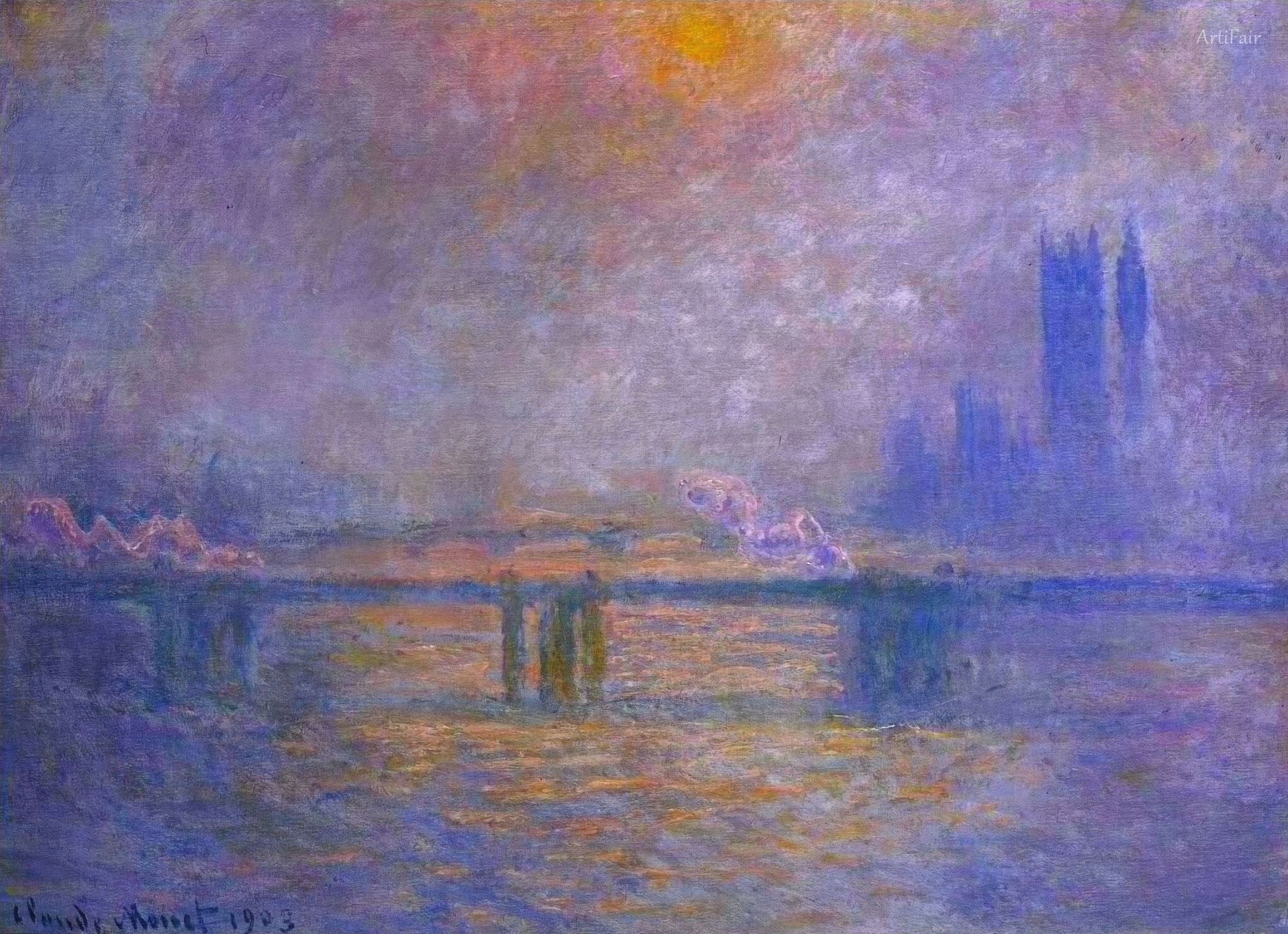
Art Appreciation
The artwork encapsulates the fog-laden atmosphere of the Thames, where the iconic Charing Cross Bridge stands as a mere silhouette against the twilight sky. Monet’s brushstrokes evoke a sense of dreamy fluidity; wisps of color blend seamlessly, creating a tapestry of blues, violets, and ochres. The shimmering water reflects faint hints of orange from a setting sun, while the structures in the background appear softly blurred, enhancing the ethereal quality of the scene. This deliberate vagueness invites viewers to lose themselves in the mood of the painting, almost as if they are standing on the riverbank, breathing in the cool air filled with hushed sounds of the city, the gentle lapping of water echoing faintly in the distance.
In terms of technique, Monet’s impasto application of paint adds a palpable texture that brings the scene to life. The interplay of light and shadow dances across the water surface, creating dynamic reflections—the very essence of Impressionism. Historically, this piece was created during a period when London was witnessing industrialization, yet Monet manages to capture a moment of tranquil beauty amidst the encroaching urbanity. The artwork is a testament to his ability to transcend time and place, inviting contemplation of both nature and man-made structures, making us feel the weight of history while simultaneously experiencing a moment of serene solitude.